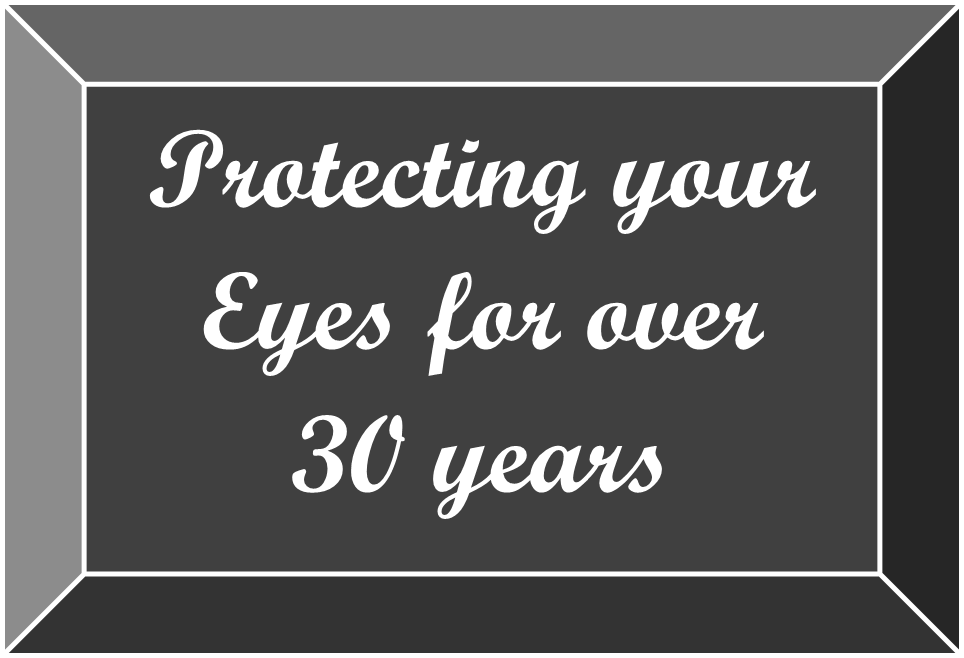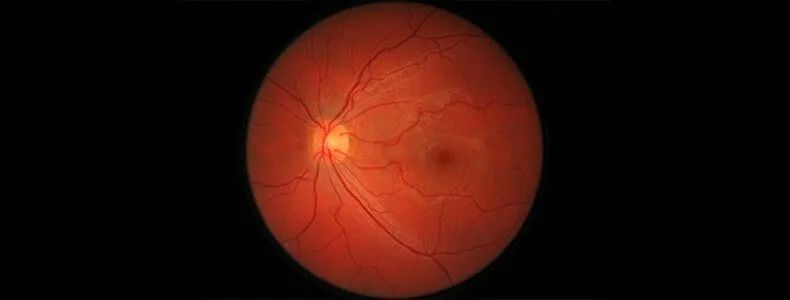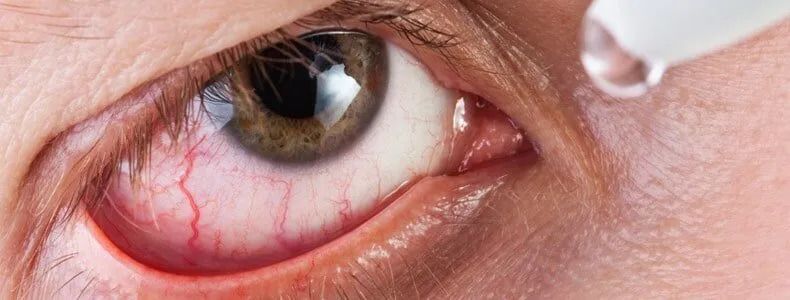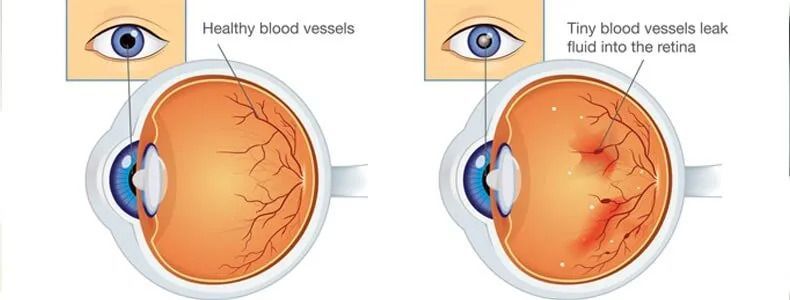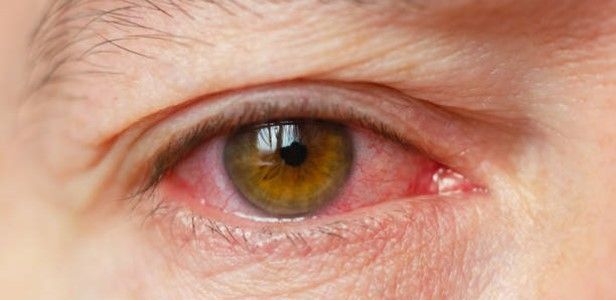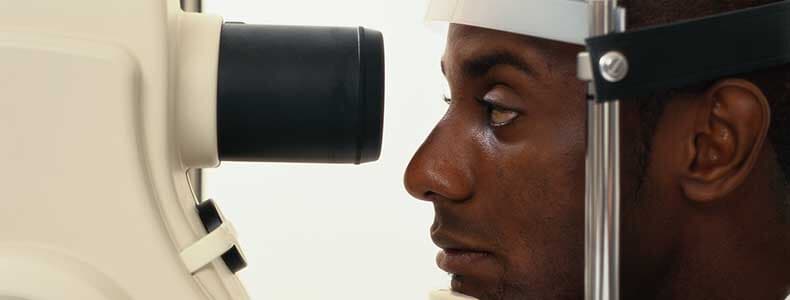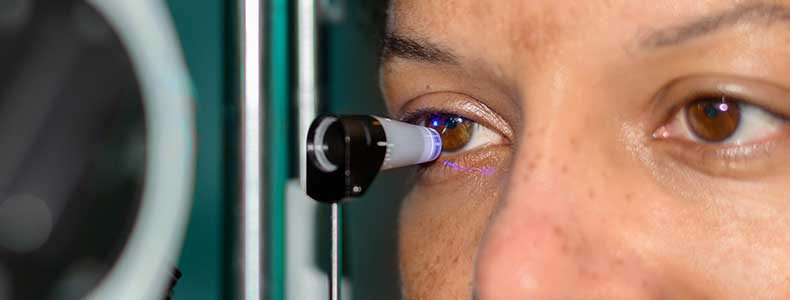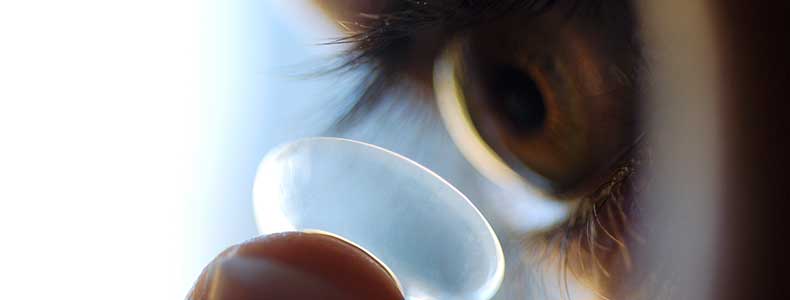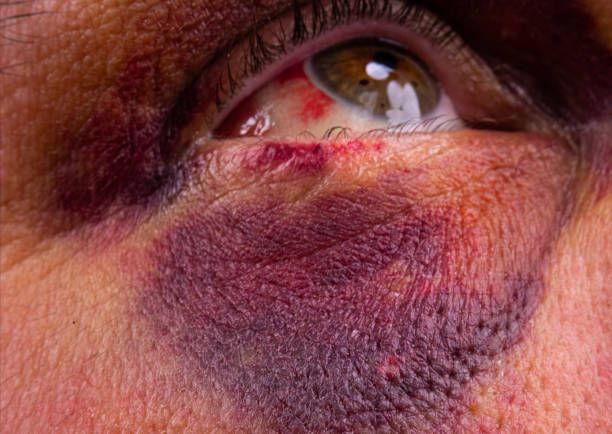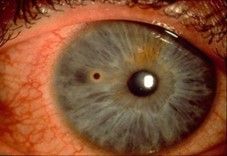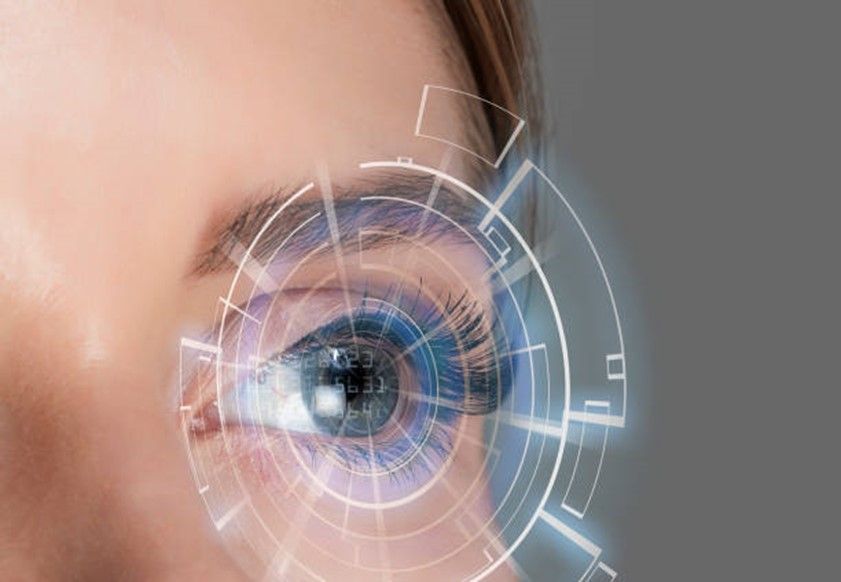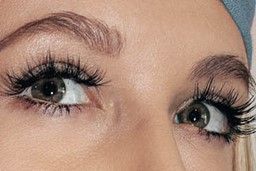We treat Ocular Conditions and Diseases
The Eye Contact, Inc. offers a full range of eye health services to patients of all ages, from children to older adults: comprehensive eye exams, eye disease diagnosis and management, immediate attention for eye emergencies, and complete eye health management. The optometrist in our practice provides eyewear prescriptions and offers corrective laser eye surgery co-management as well.
You can get in touch with our office to set up an appointment at your convenience and learn more about some of our key services below.
OCULAR CONDITIONS TREATMENT
Age -Related Macular Degeneration (AMD)
AMD is a common eye disease associated with aging that gradually destroys clear, central vision. AMD occurs in two forms: Wet and dry. Only ten percent of people with AMD have wet AMD, which is the most severe type because of the growth of blood vessels at the macula, which often leak, and causes fluid under the macula. The dry form, which is thought to be a breakdown of the light-sensing cells in the macula, does not cause leaking vessels. Most cases of macular degeneration are age-related. Risk factors include having a family member with AMD, smoking, high blood pressure and obesity. The main symptom is central vision loss.
Cataracts
A cataract is the clouding of the eye's clear lens that typically occurs with aging. Cataracts are painless and often progress slowly. Therefore, many years may pass before a patient experiences symptoms. Common symptoms of cataracts include blurry vision, poor night vision, halos around lights and sensitivity to bright sunlight or glare at night.
Cataracts surgery is one of the most commonly performed and effective surgical procedures in the United States. Cataracts cannot be prevented mostly because they are age-related. However, there are some things that can be done to slow down the progression or even prevent them. These include avoiding prolonged exposure to sunlight, avoiding smoking and heavy consumption of alcohol.
Dry Eye Syndrome
Dry Eye Syndrome is one of the most common ocular conditions treated. It is usually caused by a problem with the quality of the tear film that lubricates the eyes. Dry eye can result when tear production is deficient or when tear drainage is compromised. Dry eye syndrome occurs as a part of the aging process. Dry eye is more common in women, possibly due to fluctuations in hormones that result in decreased tear or fluid production. Smoking can also contribute to dry eye syndrome. Medications such as diuretics, steroids, antidepressants, and antihistamines have all been linked to causing dry eye syndrome. Many find relief from using artificial tears on a regular basis. Sometimes too much moisture drains out of the eye through the tear ducts. Although sometimes the ducts need surgical blockage, usually plugs (temporary or permanent) solve this problem.
Diabetic Retinopathy
Diabetic retinopathy is a leading cause of blindness in the United States. People with Type 1, insulin-dependent diabetes are especially at risk for retinopathy. Diabetic retinopathy can lead to sight loss when damage to the retina light sensitive cells occur as a result of retinal bleeding and leakage. When diagnosed early, diabetic retinopathy can be effectively managed. Annual eye examinations are a must in diabetic care to prevent permanent loss of vision.
Eye Infections
An eye infection is any disease of the eyes caused by a harmful microorganism, such as a virus, bacterium, or fungus. Infections tend to occur in three areas of the eye: Eyelid. Cornea (the eye's clear outer surface)
Floaters
Floaters are small spots, semi-transparent or cloudy specks within the vitreous (clear, jelly-like fluid in the eye). These floaters take on different shapes and sizes. These spots typically move as your eye moves making it virtually impossible to stare at them. The spots are often caused by protein or matter in the eye. They can result from deterioration of the vitreous due to aging. Most spots are harmless. However, suddenly seeing new floaters or floaters with flashes of light could mean something serious, like a retinal detachment which is an ocular emergency that requires immediate medical attention and surgery. Retinal detachments occur when the retina's sensory and pigment layers separate. You should see your doctor for a comprehensive examination when you notice sudden changes in floaters.
Glaucoma
Glaucoma is a leading cause of blindness. Glaucoma is often called the “silent thief of sight” because there are no early warnings. While glaucoma is the second leading cause of blindness, it is the leading cause of preventable blindness. Glaucoma is more than six times more common in African Americans than Anglo Americans, and African Americans are more likely to go blind from glaucoma. Glaucoma is caused by increased intraocular pressure (IOP) because of malformation of the eye's drainage structure. As the aqueous fluid is produced in the eye, proper drainage is needed. Left untreated, an elevated IOP can cause irreversible damage to the optic nerve and retinal fibers resulting in permanent vision loss. Detection and prevention are only possible with routine eye examinations. However, there are some types of glaucoma that do cause symptoms.
Keratoconus
Keratoconus is a condition in which the cornea becomes thin, and cone shaped. Patients with this condition are usually very nearsighted and have significant astigmatism. This condition may be inherited or possibly result from chronic eye rubbing. The first step in treatment is the fitting of rigid gas permeable contact lenses to create a smooth evenly shaped corneal surface. If the vision deteriorates to the point that contact lenses no longer help, a corneal transplant may be necessary.
Ocular Allergies
Ocular allergies are the abnormal response of sensitive eyes to contact with allergens and other irritating substances.
EYE CARE
Contact Lens Patients
Safe contact lenses use provides an effective form of vision correction. Contact lenses prescribed by a licensed doctor of optometry are worn safely and comfortably by millions of people worldwide and have a long history of providing wearers with a safe and effective form of vision correction.
Computer Vision Syndrome
With the increase of computer usage, many patients have experienced dry eyes, irritated eyes, contact lens problems and blurry vision. In some cases the use of artificial tears, computer monitor placement and computer eyeglasses have been used to alleviate such problems. Please contact your eye doctor if you are experiencing any ocular discomfort while using your computer.
Astigmatism
Astigmatism occurs when the cornea, or surface of the eye is irregularly shaped. A cornea shape, which is spherical like a baseball, allows light rays to enter the eye to be focused on the retina, which gives a clear image. With astigmatism, the shape of the cornea is irregular – more like a football than a baseball – which causes the light rays to enter the eye only to be focused at two points rather than one, which will cause distorted or blurred vision. If it is mild, correction may not be needed. If it is more advanced, it can be treated with either eyeglasses or contact lenses.
Farsightedness (Hyperopia)
Farsightedness is caused by a cornea that is flatter than normal in which distant objects are usually seen clearly but close ones appear blurry. The treatment of hyperopia depends on several factors, such as the patient's age and activities. Eyeglasses or contact lenses are usually required for many older patients.
Near-sightedness (Myopia)
Near-sightedness occurs when the cornea is steeper than normal or the eye is longer than a normal eye, which causes light entering the eye to be focused on the front of the retina, which results in clear close vision but blurry distant vision. This is found equally in males and females, and those with a family history of near-sightedness are more likely to be nearsighted. Blurry distant vision is the primary symptom of near-sightedness. Treatment depends on many factors, such as age and activities. Vision can be corrected with eyeglasses, contact lenses or surgery.
Presbyopia
Presbyopia is sometimes referred to as “old eyes” because you lose your ability to read up close. Presbyopia occurs when the lens loses its elasticity making it very difficult to focus on close objects. The treatment is usually reading eyeglasses, some type of bifocal eyeglasses or contact lenses.
Emergency Eye Care and More
Browse Our Website
Contact Information









